Martin Edwards's Blog, page 221
July 1, 2013
Rubbernecker by Belinda Bauer - review
In a short space of time, Belinda Bauer has established herself as one of my favourite contemporary authors. Her latest book, Rubbernecker, is a memorable piece of work. I'm tempted to say that it's not for the squeamish, but then, I'm rather squeamish, and I really liked it. There are lots of descriptions of what it is like to be in a coma, and to dissect bodies in an anatomy class, and I must admit that I didn't linger too long over some of this material. But what makes this a fine novel is the combination of superb characterisaton and a very clever plot. These are the ingredients that made Minette Walters' early books hugely successful, and I think Bauer is definitely in the same league.
The main protagonist is young Patrick Fort. Bauer specialises in telling stories from the point of view of boys or young men, and she captures Patrick very well. Thsi is quite an achievement, since he has Asperger's Syndrome. I am no expert, but I do know a small amount about the challenges of living with this condition, and it seems to me that Bauer's empathetic portrayal is as effective as Mark Haddon's in The Curious Incident of the Dog in the Night-Time. At first, I wasn't sure how Rubbenecker was going to fare in any comparison with Haddon's book. Bauer took a risk, I think, when she opted to venture into similar territory. But it paid off. Her book is quite distinctive.
The build-up is relatively steady rather than providing instant reader gratification, but as I've mentioned before in this blog, that's a technique that plenty of writers (including me) use, and Bauer never lost my attention. I took an instant dislike to one character who made it clear at the outset that he didn't like a song by Rupert Holmes that I do like, and Bauer probably intended this. But I felt very sorry for him when eventually I learned of his fate, and this is part of her skill..
There's some wonderful black comedy as Patrick decides to investigate the apparent murder of a corpse he and his classmates have been dissecting. A police officer called Williams who is introduced late on in the story is given some marvellous lines, though I was a surprised by the DCI who had never heard of vagal inhibition, when a retired cop was telling me about it only a couple of weeks ago. Equally good is an awful nurse who is out to ensnare a rich husband in an entertaining sub-plot. The attention Bauer pays to her minor characters is the mark of a gifted writer. I read one national newspaper review that carped about some aspects of the book, but although there was quite a bit of coincidence in the story, where would crime writers be without the occasional coincidence? The last part of the book is especially strong, and I eagerly look forward to what Belinda Bauer will do next.. Yep, I'm a fan.
The main protagonist is young Patrick Fort. Bauer specialises in telling stories from the point of view of boys or young men, and she captures Patrick very well. Thsi is quite an achievement, since he has Asperger's Syndrome. I am no expert, but I do know a small amount about the challenges of living with this condition, and it seems to me that Bauer's empathetic portrayal is as effective as Mark Haddon's in The Curious Incident of the Dog in the Night-Time. At first, I wasn't sure how Rubbenecker was going to fare in any comparison with Haddon's book. Bauer took a risk, I think, when she opted to venture into similar territory. But it paid off. Her book is quite distinctive.
The build-up is relatively steady rather than providing instant reader gratification, but as I've mentioned before in this blog, that's a technique that plenty of writers (including me) use, and Bauer never lost my attention. I took an instant dislike to one character who made it clear at the outset that he didn't like a song by Rupert Holmes that I do like, and Bauer probably intended this. But I felt very sorry for him when eventually I learned of his fate, and this is part of her skill..
There's some wonderful black comedy as Patrick decides to investigate the apparent murder of a corpse he and his classmates have been dissecting. A police officer called Williams who is introduced late on in the story is given some marvellous lines, though I was a surprised by the DCI who had never heard of vagal inhibition, when a retired cop was telling me about it only a couple of weeks ago. Equally good is an awful nurse who is out to ensnare a rich husband in an entertaining sub-plot. The attention Bauer pays to her minor characters is the mark of a gifted writer. I read one national newspaper review that carped about some aspects of the book, but although there was quite a bit of coincidence in the story, where would crime writers be without the occasional coincidence? The last part of the book is especially strong, and I eagerly look forward to what Belinda Bauer will do next.. Yep, I'm a fan.
Published on July 01, 2013 03:50
June 30, 2013
Festivals
Festivals come in all shapes and sizes, and I have enjoyed attending a wide variety over the years. One of the most upmarket was the Cheltenham Literary Festival, where the Murder Squad was invited some years ago - in fact, it was one of the relatively few occasions when all seven of us took part in the same event - a performance written specially for the occasion which took place in an old courthouse. An enjoyable and memorable occasion.
There have also been a good many smaller scale events, ranging from literary festivals at nearby Knutsford to the distinctly unorthodox Kidwelly ebook festival last year, which created a great deal of controversy, but at least gave me a fun week-end in a pretty part of south Wales on a sunny week-end.
This year I'm looking forward very much to Gladfest, scheduled to take place in August in the wonderful setting of Gladstone's Library in north Wales. I'll be hosting a Victorian murder mystery event on the Saturday evening, and among the others who are appearing is Stella Duffy, a writer of distinction, about whom I hope to write more another day. I'll also be talking about the late Ellis Peters, creator of Brother Cadfael, at the Wellington Festival in Shropshire in October.
But today has seen the finale of an annual "must" for me, the local Lymm Festival, which combines cultural events with a wide range of other activities. It's been running for a decade now, and goes from strength to strength. Today we've had a number of guests, including Kate Ellis and her husband, wandering round local gardens which have had an open day. I'm fascinated by the marvellous gardens that lie,often quite unexpectedly, behind all kinds of houses and this annual event, like the brilliant National Garden Scheme open days, of which I'm a big fan, is a lot of fun. And something more. It's given me an idea for my next book....

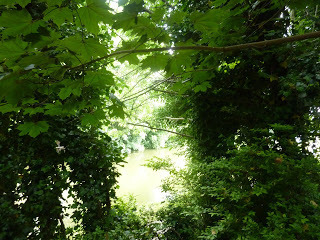
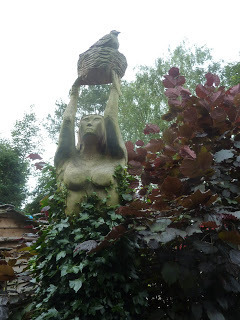
There have also been a good many smaller scale events, ranging from literary festivals at nearby Knutsford to the distinctly unorthodox Kidwelly ebook festival last year, which created a great deal of controversy, but at least gave me a fun week-end in a pretty part of south Wales on a sunny week-end.
This year I'm looking forward very much to Gladfest, scheduled to take place in August in the wonderful setting of Gladstone's Library in north Wales. I'll be hosting a Victorian murder mystery event on the Saturday evening, and among the others who are appearing is Stella Duffy, a writer of distinction, about whom I hope to write more another day. I'll also be talking about the late Ellis Peters, creator of Brother Cadfael, at the Wellington Festival in Shropshire in October.
But today has seen the finale of an annual "must" for me, the local Lymm Festival, which combines cultural events with a wide range of other activities. It's been running for a decade now, and goes from strength to strength. Today we've had a number of guests, including Kate Ellis and her husband, wandering round local gardens which have had an open day. I'm fascinated by the marvellous gardens that lie,often quite unexpectedly, behind all kinds of houses and this annual event, like the brilliant National Garden Scheme open days, of which I'm a big fan, is a lot of fun. And something more. It's given me an idea for my next book....



Published on June 30, 2013 11:12
June 29, 2013
Gimme Shelter
I've detected a trend which I find quite intriguing. I've just come across a third highly successful writer of screenplays who has finally turned to writing a novel. I've mentioned in recent times the former cricketer and Heartbeat scriptwriter Peter Gibbs, who wrote the wonderful Settling the Score, and also the admirable Robert Banks Stewart, creator of Shoestring,who has published a thriller, The Hurricane's Tail.
Now it's the turn of Rob Gittins to produce a crime novel. I'm pleased to see he's joined the ranks of those of us who favour Sixties song titles as titles of crime novels - his book is called Gimme Shelter, and it's published by a small press, Y Lolfa, which is based in Wales, where Rob lives. It's quite a gritty story which concerns witness protection, and features Ros Gilet, a witness protection officer whose job requires her to tell lies every day. Witness protection is a fascinating topic for a thriller. In fact, is a subject in which I'm very interested myself. Some years ago, I even wrote a synopsis of a mystery about witness protection, but never got any further with it - partly because I wasn't quite sure how best to research it.
I met Rob around ten years ago at a CWA conference in Hereford. Even at that stage he was a well-established member of the scriptwriting team of EastEnders, and his name continues to pop up on the credits at regular intervals - he's written more than 200 episodes. He also co-created and wrote all eight episodes of the BBC 1 crime series Tiger Bay, as well as a three-part political thriller for ITV, In the Company of Strangers. And much else besides.
The perception I have, which I think many people share, is that television writing is lucrative. And certainly Peter, Robert, and Rob have all achieved great success in their field. Yet, for most of us, writing novels is a long way short of being a massive money-spinner. So why are scriptwriters tempted to write novels? I guess that one reason is that writing a novel is essentially a personal thing, whereas television writing is highly collaborative - which can be rewarding, yet also frustrating because of the lack of control. And for a creative artist, retaining a significant degree of control over one's creation is often very important.
Now it's the turn of Rob Gittins to produce a crime novel. I'm pleased to see he's joined the ranks of those of us who favour Sixties song titles as titles of crime novels - his book is called Gimme Shelter, and it's published by a small press, Y Lolfa, which is based in Wales, where Rob lives. It's quite a gritty story which concerns witness protection, and features Ros Gilet, a witness protection officer whose job requires her to tell lies every day. Witness protection is a fascinating topic for a thriller. In fact, is a subject in which I'm very interested myself. Some years ago, I even wrote a synopsis of a mystery about witness protection, but never got any further with it - partly because I wasn't quite sure how best to research it.
I met Rob around ten years ago at a CWA conference in Hereford. Even at that stage he was a well-established member of the scriptwriting team of EastEnders, and his name continues to pop up on the credits at regular intervals - he's written more than 200 episodes. He also co-created and wrote all eight episodes of the BBC 1 crime series Tiger Bay, as well as a three-part political thriller for ITV, In the Company of Strangers. And much else besides.
The perception I have, which I think many people share, is that television writing is lucrative. And certainly Peter, Robert, and Rob have all achieved great success in their field. Yet, for most of us, writing novels is a long way short of being a massive money-spinner. So why are scriptwriters tempted to write novels? I guess that one reason is that writing a novel is essentially a personal thing, whereas television writing is highly collaborative - which can be rewarding, yet also frustrating because of the lack of control. And for a creative artist, retaining a significant degree of control over one's creation is often very important.
Published on June 29, 2013 05:32
June 27, 2013
Forgotten Book - My Own Murderer
Richard Hull is a writer who has long fascinated me, and I've chosen another of his titles as today's Forgotten Book. This is My Own Murderer, published in 1940, but probably written just before the outbreak of war. I found a very battered old paperback edition in an Amsterdam bookshop many years ago, and I'm glad I did, as I've never seen a copy since. An obscure book, then, one that cries out for a new life as an ebook.
The story is narrated by a solicitor, but not one with whom I was quick to empathise. His name is Richard Henry Sampson, and it's worth noting that this was Richard Hull's real name. Yet we can be sure this wasn't any sort of wish fulfilment, as Sampson is not a heroic figure. Far from it. The choice of name springs from Hull's love of irony.
Sampson's affable but very dodgy client, Alan Renwick, calls on him one evening, and we know from the start that Renwick has killed someone - a valet called Baynes, who was blackmailing him. Yet Sampson's instinct is not to encourage Renwick to go to the police, but rather to help him in concealing his involvement in the crime. The plot thickens pleasingly from there.
This is one of Hull's best books. One of the things I like about it is the way he presents Sampson as a rascal, but very much a loser. He constantly persuades himself that he's ahead of the game, fooling the police and everyone else, when in reality he is getting deeper and deeper into trouble. This kind of self-deception is something that really interests me, as anyone who has read Dancing for the Hangman will understand. And Hull develops the story very nicely, all the way up to a rather chilling finale. I can recommend this novel highly to anyone lucky enough to find a copy.
The story is narrated by a solicitor, but not one with whom I was quick to empathise. His name is Richard Henry Sampson, and it's worth noting that this was Richard Hull's real name. Yet we can be sure this wasn't any sort of wish fulfilment, as Sampson is not a heroic figure. Far from it. The choice of name springs from Hull's love of irony.
Sampson's affable but very dodgy client, Alan Renwick, calls on him one evening, and we know from the start that Renwick has killed someone - a valet called Baynes, who was blackmailing him. Yet Sampson's instinct is not to encourage Renwick to go to the police, but rather to help him in concealing his involvement in the crime. The plot thickens pleasingly from there.
This is one of Hull's best books. One of the things I like about it is the way he presents Sampson as a rascal, but very much a loser. He constantly persuades himself that he's ahead of the game, fooling the police and everyone else, when in reality he is getting deeper and deeper into trouble. This kind of self-deception is something that really interests me, as anyone who has read Dancing for the Hangman will understand. And Hull develops the story very nicely, all the way up to a rather chilling finale. I can recommend this novel highly to anyone lucky enough to find a copy.
Published on June 27, 2013 19:00
A Night to Remember
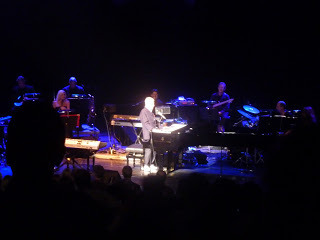
One magic moment after another...after dinner last week in the company of P.D.. James, something very different last night, when I had the thrill of attending a truly fantastic concert at the Royal Festival Hall,. The RFH saw the return of Burt Bacharach, whom I last saw there in 1996, a legendary occasion when Noel Gallagher came on stage to sing while the great man played the piano.
As a lifelong Bacharach fan, I've included references to his songs in all my novels (except the book about Dr Crippen, needless to say) and aspects of the songs actually play a part in the plot in three of the Harry Devlin books. So I was always going to love the show, but to judge by the repeated standing ovations, so did everyone else. And although in the past, some critics failed to 'get' why this man's music will last indefinitely, things have changed, and I enjoyed the laudatory reviews in The Daily Telegraph and The Independent .
For a man of 85 to perform in concert for over two hours without an interval is a feat in itself - as he said, "at my time of life, this is the you've got to be kidding tour" -, but what was really striking was the huge affection as well admiration that the audience had for one of popular culture's iconic figures. Someone told me that when he arrived for a rehearsal and emerged from his limo he was mobbed by well-wishers. Quite something for a song-writer who started out as Marlene Dietrich's conductor.And he's still writing all the time. The current work in progress, he explained, is a musical co-written with Elvis Costello, and two new songs written with Steven Sater of Spring Awakening fame were included along with many of the classics..
I've seen Burt Bacharach in concert five times and, expecting this to be my last opportunity, I was determined to seize it. I'm so glad I did. There was also a nice moment when a young man came on stage to play keyboards briefly and, as he departed, Burt announced it was his son, Oliver Bacharach. When someone shouted out, "Bring him back"", Burt said, "He only knows one song!" He did come back though, to share in a truly memorable occasion.
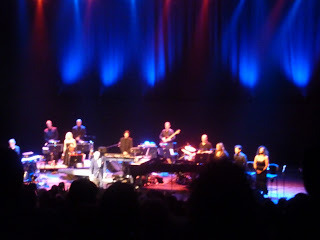
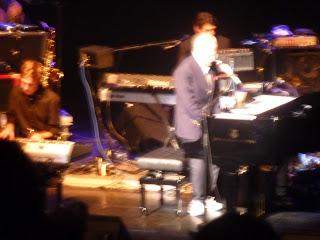
Published on June 27, 2013 10:45
June 26, 2013
Edmund Crispin's Classic
I first came across the work of Edmund Crispin as a teenager, and I vividly remember reading The Moving Toyshop at school when I was about fourteen. I'd borrowed it from the town library, and took it in with me to while away dull moments in between lessons. The book had a map of Oxford, a city which I'd never visited, and never dreamed that I would get to know well. I really enjoyed the story, and acquired my own copy of the book many years later. But for some reason I've not got round to re-reading it until now.
There are a couple of reasons why I returned to The Moving Toyshop. First, I've been asked to talk to visiting crime writers from overseas about Oxford detectives at a conference in a couple of months' time and I felt I'd better do some homework. Second, I attended a talk given by Susan Moody at Crimefest on the subject of Oxford detective stories. Susan's enthusiasm made me think it was time to go back to Crispin.
I'm glad I did. The Moving Toyshop is tremendous fun, light-hearted and with an unusual, if occasionally eccentric plot that makes use of a very interesting legal device, the secret trust. The early chapters are quite dazzling and there are some memorable characters, including a very dodgy solicitor, and lots of witty lines. Gervase Fen, the amiable English don, leads the chase for the person who killed Miss Tardy in the toyshop..
Of course, in a high-spirited book like this, it is not easy to maintain tension throughout, and there are moments when farce predominates. The mystery is nicely constructed, but not as striking as the wonderful premise of the toyshop that appears to be in two different parts of Oxford. Crispin is very good at capturing the city's essential atmosphere, and it is a genuine tragedy that his great talent burned out so soon. After a flurry of novels, he was in effect burned out at the age of thirty and he spent the rest of his life drinking himself slowly to death. We had a long wait for his last book,The Glimpses of the Moon, but it proved to be a disappointment. Far better to remember this witty entertainer by books like The Moving Toyshop.
(Incidentally, are other Blogger users finding, as I have done lately, that the previous torrent of spam comments has reduced to a trickle at most? Long may this continue...)
There are a couple of reasons why I returned to The Moving Toyshop. First, I've been asked to talk to visiting crime writers from overseas about Oxford detectives at a conference in a couple of months' time and I felt I'd better do some homework. Second, I attended a talk given by Susan Moody at Crimefest on the subject of Oxford detective stories. Susan's enthusiasm made me think it was time to go back to Crispin.
I'm glad I did. The Moving Toyshop is tremendous fun, light-hearted and with an unusual, if occasionally eccentric plot that makes use of a very interesting legal device, the secret trust. The early chapters are quite dazzling and there are some memorable characters, including a very dodgy solicitor, and lots of witty lines. Gervase Fen, the amiable English don, leads the chase for the person who killed Miss Tardy in the toyshop..
Of course, in a high-spirited book like this, it is not easy to maintain tension throughout, and there are moments when farce predominates. The mystery is nicely constructed, but not as striking as the wonderful premise of the toyshop that appears to be in two different parts of Oxford. Crispin is very good at capturing the city's essential atmosphere, and it is a genuine tragedy that his great talent burned out so soon. After a flurry of novels, he was in effect burned out at the age of thirty and he spent the rest of his life drinking himself slowly to death. We had a long wait for his last book,The Glimpses of the Moon, but it proved to be a disappointment. Far better to remember this witty entertainer by books like The Moving Toyshop.
(Incidentally, are other Blogger users finding, as I have done lately, that the previous torrent of spam comments has reduced to a trickle at most? Long may this continue...)
Published on June 26, 2013 01:26
June 25, 2013
The Pleasures of Research

Shotsmag, run by Mike Stotter, is a crime and thriller ezine that grew out of a print magazine that was established in the Nineties by a group of fans including Bob Cartwright. The continuing energy, enthusiasm and expertise of Mike and the current team has resulted in a resource that is of tremendous value to crime fans.
Mike has kindly published an piece of mine discussing the pleasures of researching The Frozen Shroud in lovely Ullswater. Shotsmag also includes a great review of the book written by Sue Lord, which naturally I was delighted to see.
On the subject of research, I'm currently turning my attention to the next Lake District Mystery, number seven in the series. Since I finished The Frozen Shroud, I've not been totally idle, mind you. I've been tackling a major non-fiction project which I very much hope will see the light of day at some stage in the future. I've also been working on the CWA's Diamond Jubilee anthology, Deadly Pleasures, which contains some wonderful brand new stories by star names such as Peter Robinson, John Harvey and Ann Cleeves.
But now it's back to fiction. I'm warming up with a short story, a light-hearted piece written in tribute to the late Maxine Clarke which I'll be submitting to a proposed charity anthology in the near future. Then I should be ready to produce a synopsis of the new book. And I'm tempted to research a different part of the Lakes this time. Somewhere where I might construct a sandstone quarry, perhaps....
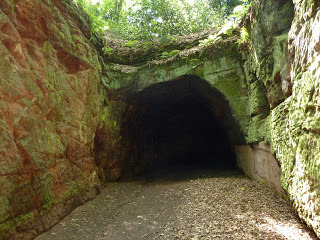
Published on June 25, 2013 03:46
June 24, 2013
Publication Day
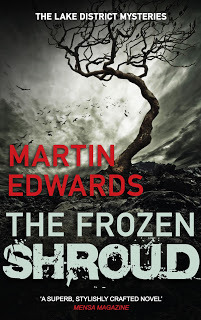
The Frozen Shroud is published in the UK today by Allison & Busby. What, if any, reaction will this event, admittedly rather more momentous for me than for anyone else, provoke? One thing is for sure - it's a mistake for writer to devote much time to waiting for reviews. For a start, they might never arrive. You'd be surprised how many really gifted and long-established writers experience a lack of reviews of their excellent books. Even Harry Keating, about whom I wrote yesterday, a man who won two Gold Daggers,the Diamond Dagger and much else besides,found it far from easy to get his last few books reviewed in the national press - and he had for many years been a critic for national newspapers himself. Fortunately, online reviews have become more significant and much more numerous in recent years.
Another thing to fret about is that the reviews might not be kind. It's all the more a risk when one has tried to take one's series in a slightly different direction, as I have done with The Frozen Shroud. But any writer of entertainment fiction is bound to be anxious to know whether their latest effort works for readers. And I'm no exception.
Due to the curious quirks of the publishing world, The Frozen Shroud has appeared in the US a little before its appearance in the UK edition. And this has meant that I've had a preview of reader reaction from reviewers of the American edition. I hope it's an indication of how British readers will respond, since the reviews have been gratifying, and there have been plenty of them so far, which makes me feel rather lucky.
Writers sometimes tend to feel insecure, and even if we're not insecure, we like to be told positive things about our books. Bad reviews hurt, and often stay in the memory longer than good reviews. But at the same time an author has to be realistic. You can't expect even your fans and your friends (even your family!) to like every book you write in equal measure. Constructive and supportive criticism, as long as it's delivered in a positive and sympathetic context, can be helpful. Anyway, that's what I keep telling myself, and I'm fairly sure I believe it when my books are being reviewed, not just when I'm reviewing books by others!
Reviews of The Frozen Shroud to date have just been uploaded on to my website. Of course I'm pleased about the nice quotes from Mystery Scene, Publishers' Weekly, Kirkus Reviews and so on, as well as the line:"One of those novels that plays with your mind..." from Readful Things. I'm rather flattered by the idea of my novel playing with my reader's mind, I must admit. But the reality is that, like most crime writers, I'll be content as long as reviewers and readers find my work enjoyable to read.
Published on June 24, 2013 02:14
June 23, 2013
Agatha Christie's Marple: Greenshaw's Folly - ITV review
Agatha Christie's Marple continued tonight with Greenshaw's Folly. This title may be unfamiliar to many readers. In fact, "Greenshaw's Folly" is a short story, and the screenplay, by Tim Whitnall, welded plot elements from that story with some from another called "The Thumb Mark of St Peter". This might seem like a recipe for a rather disjointed show, but it began well, I thought, before becoming bogged down in excessive convolutions.
Julia Mackenzie held the story together. She may not be Joan Hickson, but she is more akin to my idea of Miss Marple than, say, Margaret Rutherford or Geraldine McEwan. She has identified the strength in Jane Marple's character, a combination of inquisitiveness and a determination not to be rebuffed, coupled with a firm moral sense and a genuine compassion. I tend to think that Christie would have approved her portrayal of the sage of St Mary Mead.
Miss Marple finds a position for a young woman, played by Kimberley Nixon, who seeks her help, but life at her new home, Greenshaw's Folly, proves far from straightforward, and before long the butler is found dead. Miss Marple crosses swords with a detective played by the always enjoyable John Gordon Snclair, and the usual excellent cast included such notables as Fiona Shaw, Julia Sawalha, Joanna David and Judy Parfitt.
I found watching the show a relaxing way to build up to Publication Day (in the UK, at any rate) of The Frozen Shroud. This is not an event likely to stop traffic anywhere, but it's a book that I'm very glad to have written. Tomorrow I'll talk about that eternally tense subject for a writer - the experience of waiting for reviews of one's latest effort. Even Agatha Christie, I suspect, must have been a bit nervous about how people would react to her latest book, and I'm no different.
Julia Mackenzie held the story together. She may not be Joan Hickson, but she is more akin to my idea of Miss Marple than, say, Margaret Rutherford or Geraldine McEwan. She has identified the strength in Jane Marple's character, a combination of inquisitiveness and a determination not to be rebuffed, coupled with a firm moral sense and a genuine compassion. I tend to think that Christie would have approved her portrayal of the sage of St Mary Mead.
Miss Marple finds a position for a young woman, played by Kimberley Nixon, who seeks her help, but life at her new home, Greenshaw's Folly, proves far from straightforward, and before long the butler is found dead. Miss Marple crosses swords with a detective played by the always enjoyable John Gordon Snclair, and the usual excellent cast included such notables as Fiona Shaw, Julia Sawalha, Joanna David and Judy Parfitt.
I found watching the show a relaxing way to build up to Publication Day (in the UK, at any rate) of The Frozen Shroud. This is not an event likely to stop traffic anywhere, but it's a book that I'm very glad to have written. Tomorrow I'll talk about that eternally tense subject for a writer - the experience of waiting for reviews of one's latest effort. Even Agatha Christie, I suspect, must have been a bit nervous about how people would react to her latest book, and I'm no different.
Published on June 23, 2013 14:25
Harry Keating
The first book about crime fiction that I read was Bloody Murder, by Julian Symons. It remains a classic commentary on the genre. I also much enjoyed Symons novels, and before long I tried another novelist of distinction who doubled as a crime critic, H.R.F. Keating. I didn't know it at the time, but Symons and Keating were very good friends. And I certainly didn't know that eventually, I would meet both men, and find them as pleasant in person as they were incisive in print.
I got to know Harry Keating rather better than Julian Symons, and I also met Sheila Mitchell, an actor who was Harry's wife. Harry, Sheila and I spent some time together at Malice Domestic in Washington D.C. when Harry was guest of honour, and they were kind enough to invite me to join them at their table for the main banquet. Later we met from time to time at the Detection Club. Harry's death was a great loss to family and friends, to the Club, of which he was a former President, and to the genre as a whole..
Sheila, I'm glad to say, is remarkably fit and active and recently I had the privilege of staying at her home when in London to attend a Detection Club dinner. She showed me the early chapters of a biography of Harry which she has more or less completed, and which I very much hope will attract a major publisher. I learned a great deal from her about Harry's early career. Sitting in the study where Harry wrote so many notable books - two of the CWA Gold Daggers was a genuine thrill. So too was a taxi trip through the city that evening, in the company of Sheila and her friend P.D. James, with whom I had a fascinating conversation over dinner. Truly memorable.
I'm glad to say that most of Harry's books remain readily available, no mean feat given that he was prolific. It's a reminder of his enduring popularity. There is, by the way, a special deal on his novel A Long Walk to Wimbledon on Amazon tomorrow. An excellent chance for you to catch up with an intriguingly different book from one of the major figures of the genre in Britain during the past fifty years. And if you want to know a bit more about the man and his work, there's an essay I wrote about him on the articles page of my website.
I got to know Harry Keating rather better than Julian Symons, and I also met Sheila Mitchell, an actor who was Harry's wife. Harry, Sheila and I spent some time together at Malice Domestic in Washington D.C. when Harry was guest of honour, and they were kind enough to invite me to join them at their table for the main banquet. Later we met from time to time at the Detection Club. Harry's death was a great loss to family and friends, to the Club, of which he was a former President, and to the genre as a whole..
Sheila, I'm glad to say, is remarkably fit and active and recently I had the privilege of staying at her home when in London to attend a Detection Club dinner. She showed me the early chapters of a biography of Harry which she has more or less completed, and which I very much hope will attract a major publisher. I learned a great deal from her about Harry's early career. Sitting in the study where Harry wrote so many notable books - two of the CWA Gold Daggers was a genuine thrill. So too was a taxi trip through the city that evening, in the company of Sheila and her friend P.D. James, with whom I had a fascinating conversation over dinner. Truly memorable.
I'm glad to say that most of Harry's books remain readily available, no mean feat given that he was prolific. It's a reminder of his enduring popularity. There is, by the way, a special deal on his novel A Long Walk to Wimbledon on Amazon tomorrow. An excellent chance for you to catch up with an intriguingly different book from one of the major figures of the genre in Britain during the past fifty years. And if you want to know a bit more about the man and his work, there's an essay I wrote about him on the articles page of my website.
Published on June 23, 2013 04:09



